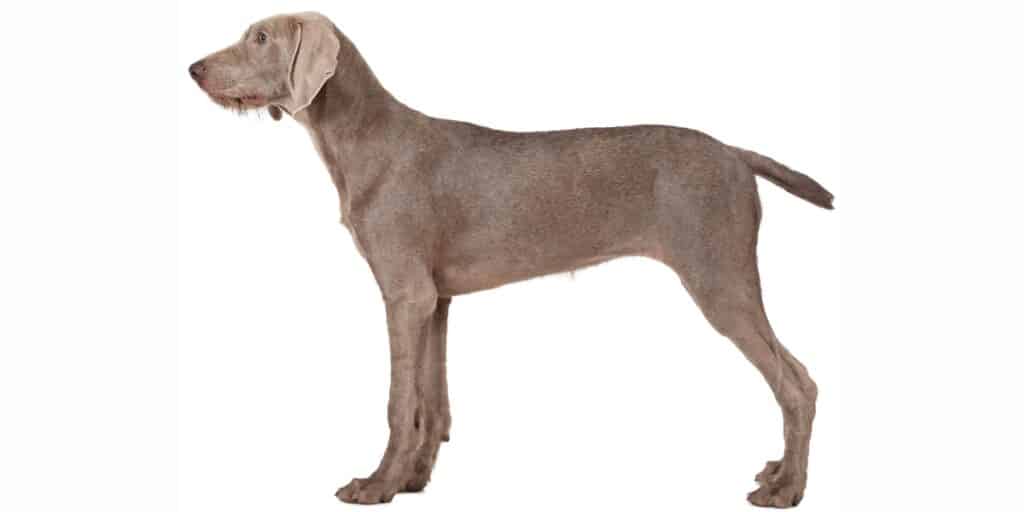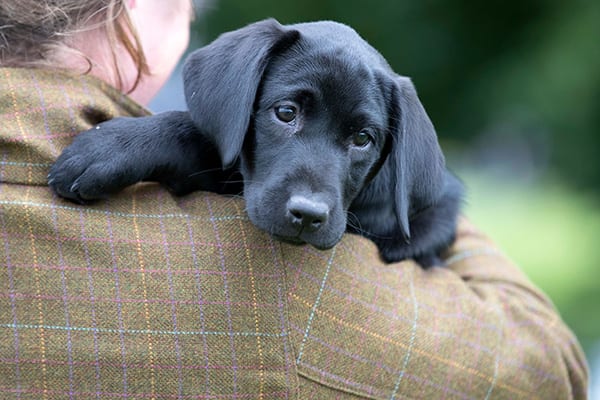
Last chance to enter Tower Bird Trophy competition for field trial competitors
Entries for the BASC Tower Bird Trophies, which reward performances in field trial competitions, close on 31 May 2024.
Get information on the legal shooting season for mammals and birds in the UK.
Apply for funding for your project or make a donation today
Comprehensive information and advice from our specialist firearms team.
Everything you need to know about shotgun, rifle and airgun ammunition.
Find our up-to-date information, advice and links to government resources.
Everything you need to know on firearms law and licensing.
All the latest news and advice on general licences and how they affect you.


The Slovakian rough-haired pointer originated from Slovakia (formally part of Czechoslovakia). Following World War II many great working dogs had been lost and there had been fundamental changes in the laws of hunting and farming within Czechoslovakia which necessitated a dog that could fulfil this new role in order to continue.
Hunters wanted a dog that was biddable and easy to train who did not range too far (the Czech test rules looked for a dog seeking at 30 paces in front and 80 paces to each side).
The emphasis lay on work after the shot, with a particular aptitude for finding and retrieving game while being reliable on a scent trail. He had to own lots of natural ability and be capable of executing a wide range of prey be it from land or water, including game from small mammals to hares and even deer.
First introduced here in 1997 by Kevin Bingham and the late Margaret Holmes, the first Slovakian rough-haired pointers in the UK were Amie and Amaretto vom Kapffelsen from Germany, then Spek, Santel and Supa zo Sorosa from Slovakia – and these five are the foundation stock of today in the UK. The breed was included on the Kennel Club’s import register in 1998 and the first litter registered in March 1999. The late Nicholas Elder imported a further five into Ireland and Sandra Rowbury two more into the UK.
In April 2005 a group of enthusiasts got together to form the Slovakian rough-haired pointer club and applied to the UK Kennel Club for recognition in June 2006, this was then granted in 2007.

The Slovakian rough-haired pointer has a distinguished appearance, and is strongly built but not cumbersome. They are slightly longer in body than height at the withers. There is nothing exaggerated on a Slovak, the neck is of medium length, lean and held proudly, the marked withers, from well-laid shoulders, flow smoothly into a level topline, finished with broad well angulated hind quarters.
His forelegs are strong and straight with the hind legs showing well-developed first and second thighs in adults; this gives him the power and endurance to work all day on different terrain.
Straight with close-fitting lips and a large, dark nose to take in all the scent. His almond shaped amber eyes give a soft yet intelligent expression. He is double coated. The short, fine undercoat is usually shed in summer and the longer outer coat is harsh and straight, approximately 4cm long.
The base colour is grey of any shade. This was the original colouring of all the early imports and was inherited from the strong Weimaraner gene and sometimes shares the lighter shading on the head and ears. Unlike his Weimaraner ancestor, the Slovak is allowed white markings on his chest and legs.

The Slovakian rough-haired pointer appears to be in a good position as one of the healthiest gundog breeds. The Slovakian rough-haired pointer club runs several online breed health surveys which any owner and non-member with a Slovak is encouraged to complete. This provides an overview of the health of the breed and helps to monitor and highlight any potential problems.
As the breed is still relatively young in this country and we continue to import dogs from the continent, the hunting ability hasn’t been watered down by breeding for the show ring alone, with no split between the working and show lines, so we are lucky to still have a dual-purpose gundog.
With bags of potential and careful training Slovaks can make fabulous working gundogs. As with any gundog it’s important to teach the recall and stop. Anyone looking at the ancestors of the breed might think he’s just like a Weimaraner or a German wirehaired pointer, but they would be wrong! The SRHP is so different; he has a sensitive side to him and cannot be pushed into working for you. But with consistent training, and rewarded with your loving praise, he will work to his best ability for you.
Read the full article and browse our full list of all 37 pedigree Gundog breeds as recognised by The Kennel Club to find out more about gundogs and how to care for them here.

As the Slovakian rough-haired pointer was originally imported for its working ability, it’s a shame that only a few of these dogs have been entered and gained awards in field trials.
Working tests, however, have been well supported and there are lots of dog and handler combinations that do very well and are in the awards at all levels. Lissa Fynn and Bak Dido Slovakia (Cash) were members of the successful winning England team competing twice at the HPR Home International held at The Game Fair (formerly the CLA), showing that Slovakian rough-haired pointers can indeed hold their own against the best in the country.
In December 2008 the Kennel Club approved the Interim Breed Standard enabling the breed to enter Import Register classes at Kennel Club licensed shows with a real milestone occurring in 2013 when Import Classes were offered at Crufts for the first time. In 2017 Best Import breed winners were also allowed to compete in the Gundog Group, instead of just parading the main ring with a lap of honour.
From January 2021 Import Breeds were allowed to compete in Any Variety and Stakes Classes at shows. In 2023 Lynda Adams with Swiss Ch Achouffe Philanderer ShCEx (Jakub) made breed history by gaining Best Import Register at Crufts 2023 and represented the breed in the Gundog Group.
We now have a group of dedicated Slovakian rough-haired pointer owners spread across the UK who regularly show their dogs at championship shows down to local exemption and fun shows. Things are definitely on the up in the showing scene, however it may be some time before the SRHP comes off the import register and is able to gain titles such as UK Show Champion.

The Slovakian rough-haired pointer is, above all, a working gundog, one of a number of breeds which make up the hunt, point and retrieve subgroup, and his characteristics are those needed for the job he was bred for. Originally bred to work with a single person with a gun, and to deal with game for the pot. He was designed as a largish, powerful hunting dog that found and pointed game, he would then retrieve tenderly to hand from land and water.
As a companion, the breed is fairly biddable and reasonably easy to live with, but early training and consistent house rules are essential, as with any other breed. It is important to understand the dog’s origins and no matter how many generations there are between the pup in your house and the first recognised specimens of the breed, the basic instincts are still there. What many people find is that they have brought up a pet which gets away with quite a lot, but one day he will scent something which awakens all his instincts and he will go, quite probably at full gallop.
Get 20% discount on annual print and digital subscriptions – use code BASC20. Click here to subscribe.
Read the full article and browse our full list of all 37 pedigree Gundog breeds as recognised by The Kennel Club to find out more about gundogs and how to care for them here.
Subscribe to Gundog Journal, Britain’s only dedicated publication for anyone working, owning or with an interest in gundogs. A bi-monthly of collectible quality, all six issues are filled with timeless content written by professional trainers and champions as well newbies, rookies and grassroots handlers learning the ropes. The pages cover every aspect of owning a gundog – from puppyhood right through to retirement as well as thought-provoking opinion and comment. Gundog Journal is a true celebration of man’s best friend in the field.


Entries for the BASC Tower Bird Trophies, which reward performances in field trial competitions, close on 31 May 2024.

As reported thefts of dogs in the UK soar, what can you do to prevent your dog from being stolen? Experts from Skinner’s share their advice on keeping your dog safe.

The gundog world is uniting for the 5 Regions Charity Working Test, a national event created to raise awareness of mental health challenges in rural communities.
Sign up to our weekly newsletter and get all the latest updates straight to your inbox.
© 2025 British Association for Shooting and Conservation. Registered Office: Marford Mill, Rossett, Wrexham, LL12 0HL – Registered Society No: 28488R. BASC is a trading name of the British Association for Shooting and Conservation Limited which is authorised and regulated by the Financial Conduct Authority (FCA) under firm reference number 311937.
BASC Direct Ltd is an Introducer Appointed Representative of Agria Pet Insurance Ltd who administer the insurance and is authorised and regulated by the Financial Conduct Authority, Financial Services Register Number 496160. Agria Pet Insurance is registered and incorporated in England and Wales with registered number 04258783. Registered office: First Floor, Blue Leanie, Walton Street, Aylesbury, Buckinghamshire, HP21 7QW. Agria insurance policies are underwritten by Agria Försäkring.
If you have any questions or complaints about your BASC membership insurance cover, please email us. More information about resolving complaints can be found on the FCA website or on the EU ODR platform.